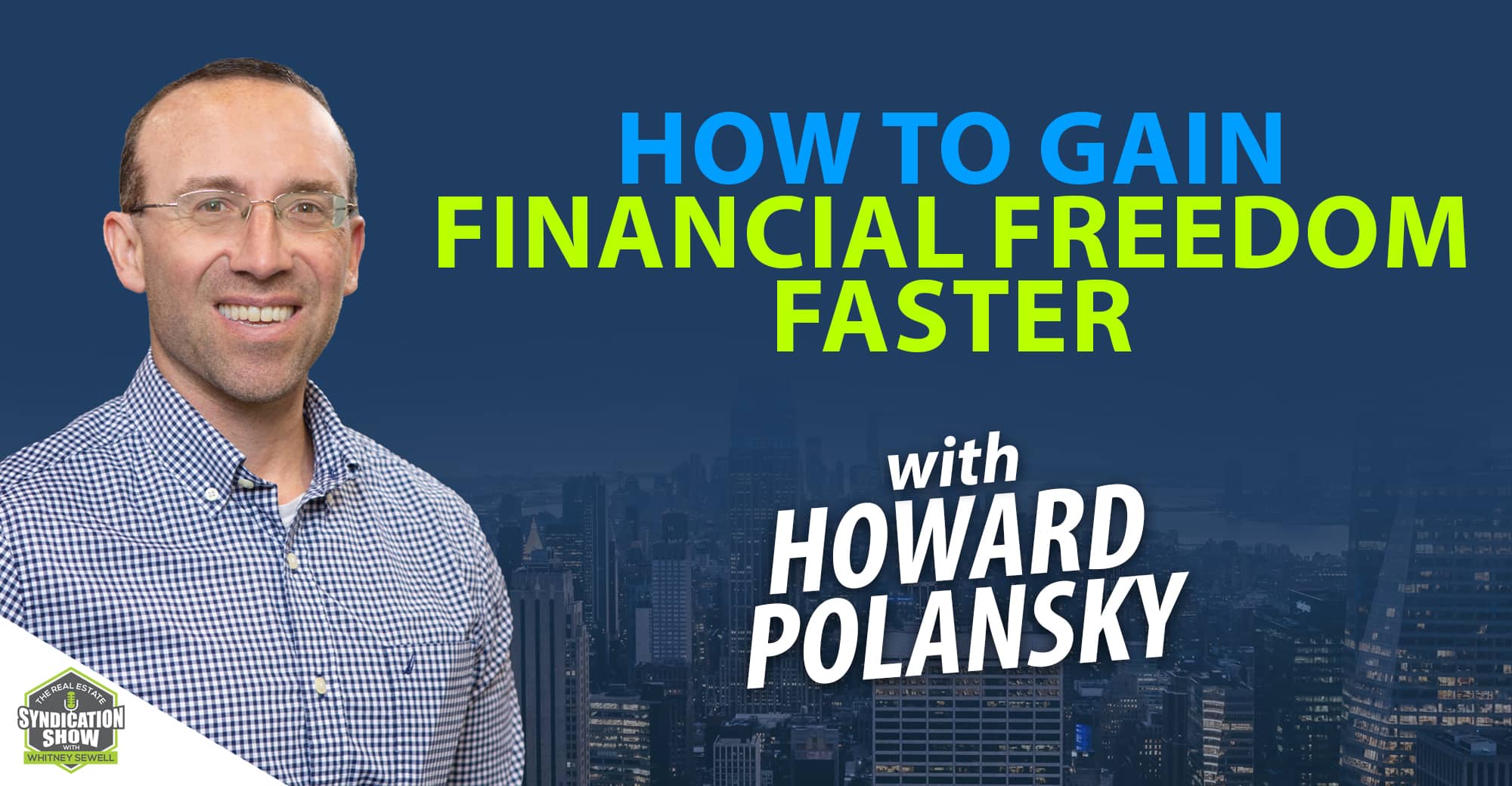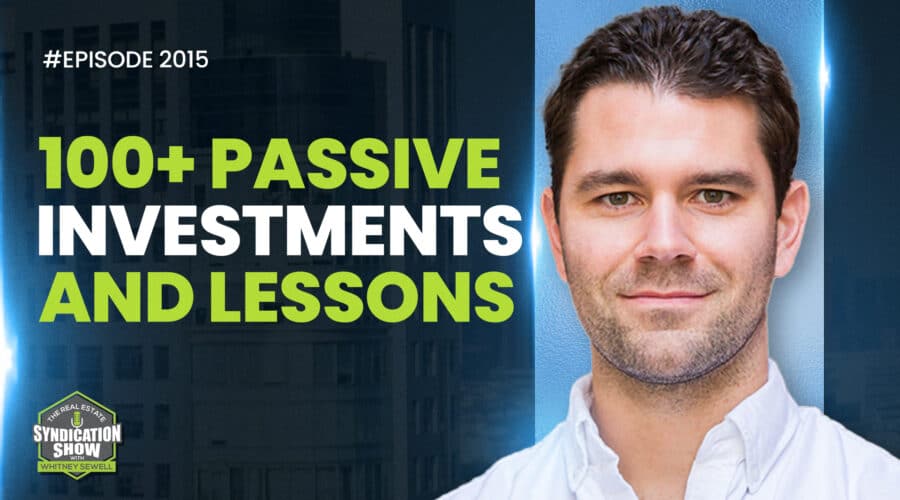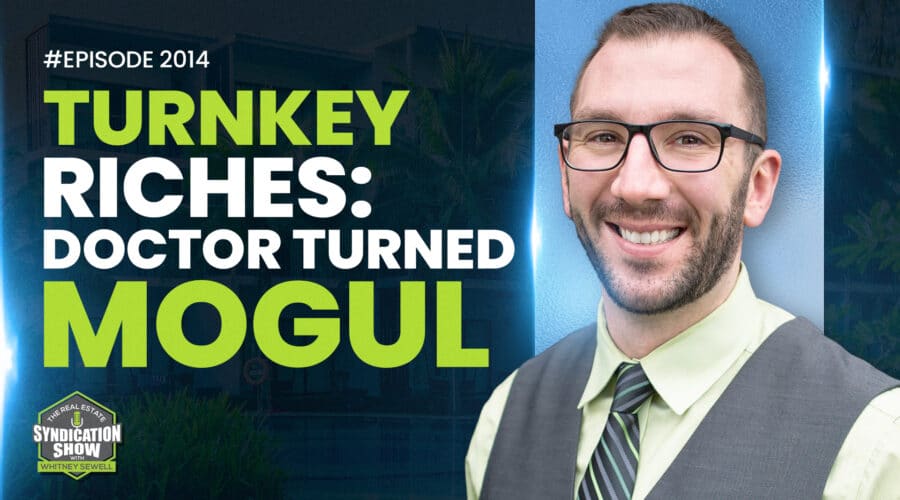Who doesn’t want financial freedom? Today, we talk about achieving financial freedom faster with Howard Polansky of Cash Flow Coaching. Howard was a former dentist who found his ultimate calling – coaching.
Our Gracious Sponsor:
DEAL ANALYSIS WORKSHOP
Deal Analysis. The #1 Critical Skill EVERY Multifamily Investor MUST know!
Want to take your investing career to the next level? Then check out Think Multifamily’s Deal Analysis Workshop.
For more information, go to www.ThinkMultifamily.com/daw.
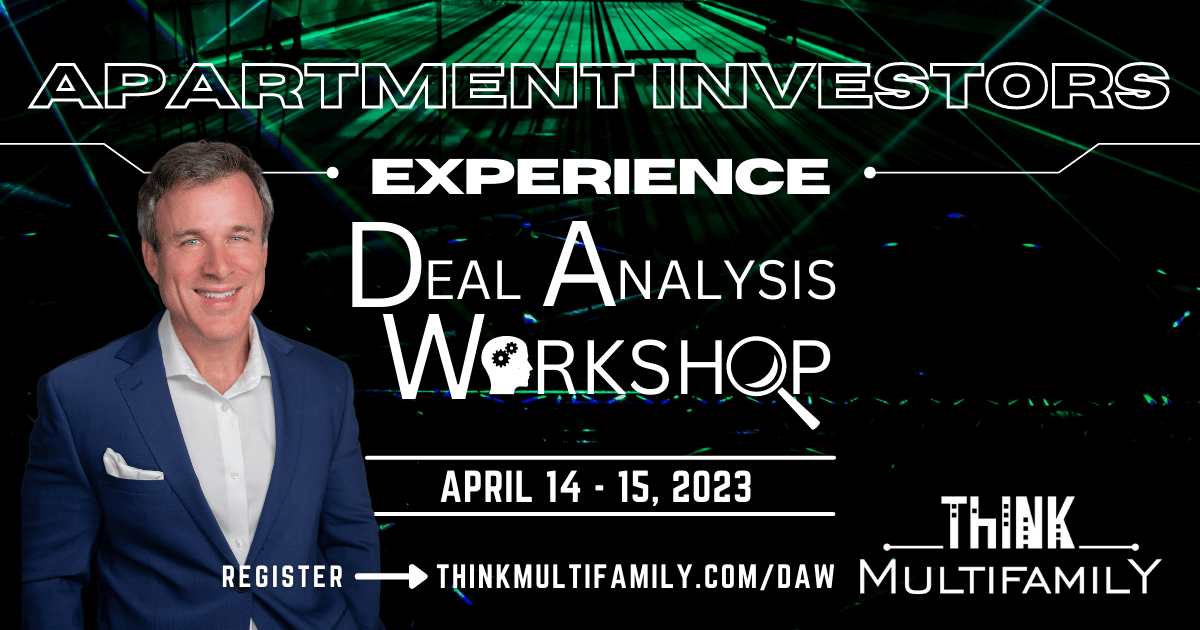
Watch the episode here:
Listen to the podcast here:
Today, Howard talks about many ways you can maximize profits and credits so that you can achieve financial freedom. He also discusses different kinds of credits, the advantages of being debt-free, the importance of having safety and a buffer when doing business, as well as the most rewarding part of being a coach. Click the play button now and learn new wisdom today!
Key Points From This Episode:
- Howard talks about his background as a dentist who found financial freedom.
- How did Cash Flow Coach USA start?
- Howard discusses the different kinds of credit.
- How can being debt free be an advantage to you?
- How do the interest rates affect the line of credit?
- Howard emphasizes the importance of having safety and a buffer.
- Howard shares that it’s part of his coaching service to look after the fixed costs.
- The valuation structure is really built on how controlled your expenses are.
- What’s the most rewarding part for Howard being a coach?
- What’s the typical way how people learn to do cash flow management?
Tweet This!
“Sometimes life leaves you little clues and other times life hits you with a two-by-four.”
“If we can improve the profitability of the business, it’s going to spill over to their personal life.”
“Being debt free is not the be-all-end-all. But I’ve got to go somewhere with people. And so I say, we’re going to go in the direction of being debt free.”
“It’s all based around this idea of how to utilize the lines of credit effectively. And so, when you think of what are examples of lines of credit, a credit card is a line of credit. That’s probably the most universal example. It’s not what I use for showing people how to do this. But, another one is a personal line of credit. But, the really big one that people are going to do, for the most part, to make this system work is a home equity line of credit.”
“I want to make sure that there is safety, there is buffer because life happens.”
Links Mentioned:
About Howard Polansky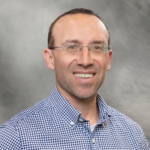
Full Transcript
EPISODE 1545
[INTRODUCTION]
Howard Polansky (HP): It’s all based on this idea of how to utilize the lines of credit effectively. And so, when you think of what are examples of lines of credit, a credit card is a line of credit. That’s probably the most universal example. It’s not what I use for showing people how to do this. But, another one is a personal line of credit. But, the really big one that people are going to do, for the most part, to make this system work is a home equity line of credit.
Josh McCallen (JM): Welcome to The Real Estate Syndication podcast with Whitney Sewell. And as I joke sometimes my name is Josh McCallen. So where’s Whitney today? Well, as a friend of Whitney’s, it is an honor to be able to guest host his show. And the community that he has built has become our community. We’re so grateful to be part of all of your lives.
So my name is Josh McCallen. And I come to you from Accountable Equity. Today, we get to have a wonderful guest today, a gentleman I’ve come to know over the years, and recently got to meet face-to-face for the first time, who’s a fellow teammate and investor with us in our projects. And he has something incredible to share because he’s one of those gentlemen that has gone through the looking glass.
He built a wonderful dental practice, which I have not yet built a dental practice, though I admire all the dentists who have and he’s going to share a little that journey. And then even bigger than that, he’s going to share how he left, exited it, found financial freedom, and has now created Cash Flow Coach USA, financial freedom faster, which is a business he’s passionate about. And we had to get him on the show to share with you strategies, and tips, and techniques that you can use right away. He is a wealth of advice and wisdom. I’m so glad to have him here.
[INTERVIEW]
JM: So welcome to the big stage Howard Polansky.
HP: Josh, thank you so much. Wonderful to be here. And good to see you again.
JM: It is, you know, we hadn’t met each other face-to-face for a long time. And we’ve been investing together and then all of a sudden you came and visited one of the resorts we’ve all owned. Oh, it’s so nice of you.
HP: What you have done or your vision, It wasn’t just you know, swinging hammer. What the team has done is absolutely incredible. So yes, the small advertisement for were no and getting down to South New Jersey. People just have to see it. It’s been incredible.
JM: Well, you know, what’s great about this show is Whitney’s created this awesome platform where he allows and invites wonderful people like you that come with great character, wisdom, and you’ve done it, you’ve done what you’re about to talk about. And so without any delay, please teach us why. Maybe the backstory. I mean, I kind of teased it. Would you share the backstory about where you’ve been and where you are today?
HP: Sure. So in my past life, I was a dentist, practice for 16 years. First started with the Navy, then got out into private practice in Austin, Texas. In late 2016, I was just starting to get burnt out. I didn’t know where to go, how to pivot. And sometimes life leaves you a little clues and other times life hits you with a two-by-four. My two-by-four moment was in May of 2018.
Now, I know you’ve got a bunch of kids, Josh. But I’ve got two boys. My older son, he came home with a stomachache. Three days later, we’re in the ICU at the children’s hospital having emergency surgery. It was appendicitis that turned septic, 29 days in the hospital. 19 of them in the ICU, eight straight days of sedation because he went to the operating room five times. And after they take the tube out of his throat. And after they bring him down from the drugs he was on, the very first question he would only ask me, “Am I dying?”
JM: Wow.
HP: My first breath was, “Did I hear him correctly?” My second breath was, “Do not lose it right now with whatever expletives you want to throw in there.” And, I look him square in the eyes. And I say, “No, you’re not dying. You’ve had prayers from thousands of people all around the world, and you’re gonna be just fine.” He looks at me, he knows I’m telling him the truth. He closes his eyes to get more rest. I walk outside the room. And then I broke.
And it all just flooded together in terms of if life is this fragile, and I’m unhappy with the path that I’m on, burn the ships, it’s over. And that’s what I did. So, my practice September of 2018, walked away from the dental chair. Now, in that transition, I’m sitting with another dentist to over lunch and he asked an obvious question of “How are you walking away?”
And I never had a huge practice. In the dental world, it was small. It was under a million dollars of collections a year. But I made one funny comment to him which changed my life. I said, “Well, I kind of figured out how to make money move.” And he looked at me like what are you talking about? And I explained these concepts. And he’s like, “Okay, I kind of get it. I’m buying a condo next month. How about you be my coach?” And I hemmed and hawed a little bit but I said, “Yeah, when the time’s right, I’ll be your coach.”
A few weeks goes by I get the next statement in the mail for my house payment. I take a picture of it and send it to him as a joke. My house payment was $24.19. And he writes back, “I see it. I don’t understand how you can have a house payment of $24. You have to be my coach.” He was going to do the 30-year mortgage. Long story short, he paid off his home in eight months.
JM: Whoa.
HP: And so that kind of started this while that was interesting. And so he tells his business partner, I tell a friend of mine, and all of a sudden my heart just open up saying, This is why you’re here. This is the way that you’re going to make an impact in this world. It’s not doing another crown. It’s not doing another root canal. It’s showing people a system on how they can get to financial freedom faster. And that’s how Cash Flow Coach USA was born.
JM: I love it. And now, because everybody’s on the edge of their seat, please, before we get into anyone, let’s talk about the universe of ideas that you’ve been working on. How many different techniques do you share with your students?
HP: There’s really one core one, but it’s all based around this idea of how to utilize the lines of credit effectively. And so, when you think of what are examples of lines of credit, a credit card is a line of credit. That’s probably the most universal example. It’s not what I use for showing people how to do this. But another one is a personal line of credit. But the really big one that people are going to do, for the most part to make this system work is a home equity line of credit, also known as a HELOC.
And it all has to do with that you broke open this titanium safe known as a mortgage. I mean, when you think about it, a mortgage is you have a fixed payment, it goes into the house, and you can’t get it back out.
JM: That’s true, actually.
HP: Okay, and so with this line of credit, now you’ve opened up the piggy bank, you’ve opened up this titanium safe. So now you know that when you place the dollar in, the next day, you can get the dollar back out. And because of that small switch that makes the whole system rotten. And there’s other lines of credit, but what I’ve really started to help with is, business owners are really attracted to what I’m doing. And I realized, wait a second, how can I help their personal life If I don’t help their business life, because if we can improve the profitability of the business, it’s going to spill over to their personal life. And then it’s a win-win, they have a higher asset value for their business, and they can enjoy the spoils of that for their personal life, which is why we all work anyway.
JM: I like that. I like that. And this is something that first of all, we’re all obviously very intrigued. I like the idea. So to paraphrase the ideas that we all pay into our mortgage, and it’s trapped in this real estate asset. That’s beautiful. We’re all very happy to have a home, we’ve come up with a few other ideas. So you’ve also teased us in just a few, less than a year your friend paid off his house. We need you to slow down and explain that, can you break that down into pieces?
HP: I’ll use an example of someone else outside of that gentleman, another couple, husband, wife, live middle of the country. So the cost of living isn’t huge. They’ve got 28 years left on their mortgage, and their truck payment is almost as much as their house payment, okay? And he works pretty, pretty high up there and an insurance company. Doing very, very well.
And so, when I ran the numbers for them, I said, again, being debt free is not the be all end all. But I’ve got to go somewhere with people. And so I say, we’re going to go in the direction of being debt free. Instead of taking 28 years for your house, and however many years for your car, would you like to be debt free in three to four years? And of course, the first question is, are you on crack? Because that just does not sound reasonable? And the answer is, it’s all math.
What we’re doing because we’ve now again, opened up the titanium safe and we have the available liquidity, we put all of the money in against the line of credit. And when you do that you’re lowering the overall balance of debt, lowering the bounce of debt, you lower the amount of interest per day that you’re charged. But you do live, you’ve got gas, you’ve got food, you’ve got your normal expenses. And so, it’s only at that time you take the money out for the expenses, that delta stays inside the line of credit, you just repeat month after month after month. And so that excess that emergency fund that you’ve been building up or whatever, you’re now moving that into the line of credit.
JM: Can you break that down for me because I lost, I’m trying to hold. I almost feel like we all need to grab a quick pencil. And do a little math, pretend it was $100,000 mortgage, a regular mortgage or a small house.
HP: Yeah, and so let’s say so let’s make the numbers easy. $100,000 mortgage. $10,000 of income coming in. $7,000 of expenses going out.
JM: Okay?
HP: And to make this even easier, they get paid on the first of the month. We pay our expenses on the 28th of the month. Okay, so we get paid on the first of the month, you have $100,000 mortgage. If you had a true mortgage, would you put all $10,000 against the mortgage? No, because life happens.
But now if you have this open-ended tool, AKA a line of credit, you can put the entire $10,000 in. So what happens, you now lowered the balance to $90,000. And you’re being charged interest on $90,000, not 100. And you have this for 27 days. And as I said, we do have expenses, and we kind of gear everything to pay it all at the end of the month.
So $7,000 of expenses, you take the $7,000 out of the line of credit. Now the balance pops back up to 97,000 for the next three days. But think about it, you on it, from a mathematical perspective, you have 27 days for that $90,000. You have three days at $97,000. Really the amount of interest you’re being charged is like $90,300 bucks.
JM: Oh my gosh, I get it now. So this is very unique. And I get enough finally, that math really helped me now. So you’re saying get rid of the regular mortgage and go full line of credit concept? Is that what I’m hearing you say?
HP: When interest rates were lower, it made a lot of sets to do that. Now with interest rates, this is one of the risks, and hopefully, we’ll share more of the risks a little bit because there’s not a cure-all. Okay, it’s not a magic pill, we got to understand where things can go wrong.
Now, for my clients, I do look at if their cash flow is substantial enough, yeah, we can do this entire line of credit instead of having a mortgage. The other way to do this is you still have a mortgage if you have quite a good interest rate, but especially these last couple of years, the house has shot up. Even if they’ve come down recently, as we’re recording this. So what there’s still a substantial amount of back, yes, you have, you have a first position mortgage, also known as a senior, and then you have a line of credit behind it. And now you just play the line of credit on a smaller scale, and you’re using chunks from the line of credit against the mortgage so that you’re playing simple interest in one, and you’re going against the amortized interest in the other.
JM: When you make an overpayment on a house mortgage, it dramatically impacts the principal is what I’m hearing you say to, right?
HP: That is correct.
JM: Okay. So, therefore, it gets re-amortized every month if you were to do that every month.
HP: Correct. And so, back to our example of $100,000 mortgage and you know, $10,000 of income and $7,000 of expenses, your RE amortizing $3,000 at a time.
JM: I see I see. And in a sense, let’s assume that $100,000 mortgage was on a $200,000 house. So then you would potentially have like almost 1$00,000 of line of credit available, and $100,000 to pay down.
HP: Again, every state’s a little bit different in terms of what their rules are with a line of credit. But let’s make it easy and use 80%.
JM: Right?
HP: If it’s a $200,000, home, on day one, you would have $160,000 line of credit, think of it like a credit card, you just got approved for $160,000. And you now quote unquote, refinanced from this traditional mortgage of 100 grand, and now is are using $100,000 of your credit card. So you have $100,000 balance, you still have $60,000 availability of cash. And that’s really key is that I don’t use this with people that are redlining. I want to make sure that there are safety, there is a buffer because life happens.
And so, to know all of a sudden that you may have only had a $10,000 emergency fund, and now you’ve got a $60,000 emergency fund. How would that make you feel? It’s right. So those are the little things that it’s a leap of faith. I admit it, Josh, it’s a big leap of faith because you’ve been doing things a certain way and all of a sudden I am T bone and you say there’s a different way to do this.
JM: So, you know what I thought when we first learned about a strategy, I also know that you’re good at fixed cost reduction strategies as well. And is that part of your coaching as well to go look at fixed costs?
HP: Over to the business side, yes, there are a couple of other little tools and tricks that I have that can help reduce the expenses of an apartment building a hotel, a winery, and making those introductions to the right people that let them do be their expertise. But again, every dollar we can improve the EBITDA or improve the net operating income, you’re increasing the asset value potentially $8, $10, $12 $15.
JM: That’s right. That’s even interesting. Why don’t you explain that just for those listeners who who didn’t realize that. So in an operating commercial real estate or operating business, the valuation structure is really built on how controlled your expenses are. So the great bottom line, and therefore they take a factor. But maybe I’ll ask you to explain it. And why is it that you might be able to grow a business by 10 times by saving $1, but 10 times that went out?
HP: Let’s use dental practices because again, that’s a little bit more of my familiarity. And, from a valuation perspective, 10 times EBITDA as kind of the going rate for that. So it let’s just say that there is a dental practice that they are, their EBITDA or let’s just say their profit margin is $200,000. At 10 times, EBITDA, ah, that means the value of their practice is $2 million. Well, if there is a way for me to come in and improve that even $10,000, now, all of a sudden, it’s worth $2.1 million. We just by improving the profitability today, we’ve just increased the value an extra $100 grand for the sale later. Yeah, so you get the benefit today and tomorrow.
JM: You know, as we talk about things, what are some of the surprises when you give advice to people? What are some of the things that they really the most rewarding part of your work?
HP: Oh, God, it is when they get it, when they finally see it, where they’re like, “Oh, now I see how the money is moving.” And when those people when they’ve been working with me now for months, they’re like, “I would never go back to how I was doing things.”
JM: That’s incredible. Well, you do a lot of education. Can you give me an example of like, what’s the typical way people learn how to do cash flow management like this? I mean, it’s like a whole new way of thinking. What are the steps that people usually go through?
HP: Yeah. So if they reach out to me, personally, I’ll do a discovery call, it is totally complimentary. In fact, to use my services, I don’t charge a dime, until we can get a line of credit in place. Because it’s one of those if we can’t get the right tools, then I can’t help you. So, you know, so it’s one of those, we could talk for 40 hours. And if you can’t get approved, then you owe me nothing. Okay, now, I know some people are going to be a little bit skittish in terms of do I really call him and I’ll give you my phone number, like my personal line, there are no secretaries. There’s no nothing.
But a lot of people will probably just want to go and get the ebook. Inside the ebook, there is a very simple calculator that will give you a rough idea in terms of when you can get to debt free. And I want to just kind of share that I am not the Dave Ramsey poster child, in terms of you having to be debt free. Because being debt free does not mean that your expense free, you’ll never be expense free. My whole thing is about you controlling the amount of debt you want in your life. When you have all of these fixed payments, you have no control. But once you really kind of get the system all we’re doing is building up an opportunity fund so that when an investment with Renaud strikes, you can go. You’ve got access to cash there, and then you know, you can pay yourself back quickly.
JM: I love it. You know, I really appreciate that Howard, and I’m gonna take you up on that. Why don’t you share your phone number as we wrap up here and your website?
HP: Okay, my phone number is 512-608-1020. And if you want to get that book, it’s cashflowcoachusa.com forward slash book (cashflowcoachusa.com\book).
JM: I’ll tell you what, Howard, I hope people at least check out these strategies or even just realize that there’s always another way to look at the solution of financial independence and I love what you’re doing. I hit your website and it talks about there are cashflow investing strategies, there are business cashflow improvements, and there are personal capital improvements. So really the full lifecycle of people that want to embrace financial independence and freedom today. I love it. Thank you.
HP: You’re welcome. Thank you so much for the opportunity.
[END OF INTERVIEW]
[OUTRO]
Whitney Sewell: Thank you for being a loyal listener of the Real Estate Syndication Show. Please subscribe and like the show. Share it with your friends so we can help them as well. Don’t forget, go to LifeBridgeCapital.com where you can sign up and start investing in real estate today. Have a blessed day.
[END]
Love the show? Subscribe, rate, review, and share!
Join the Real Estate Syndication Show Community:

